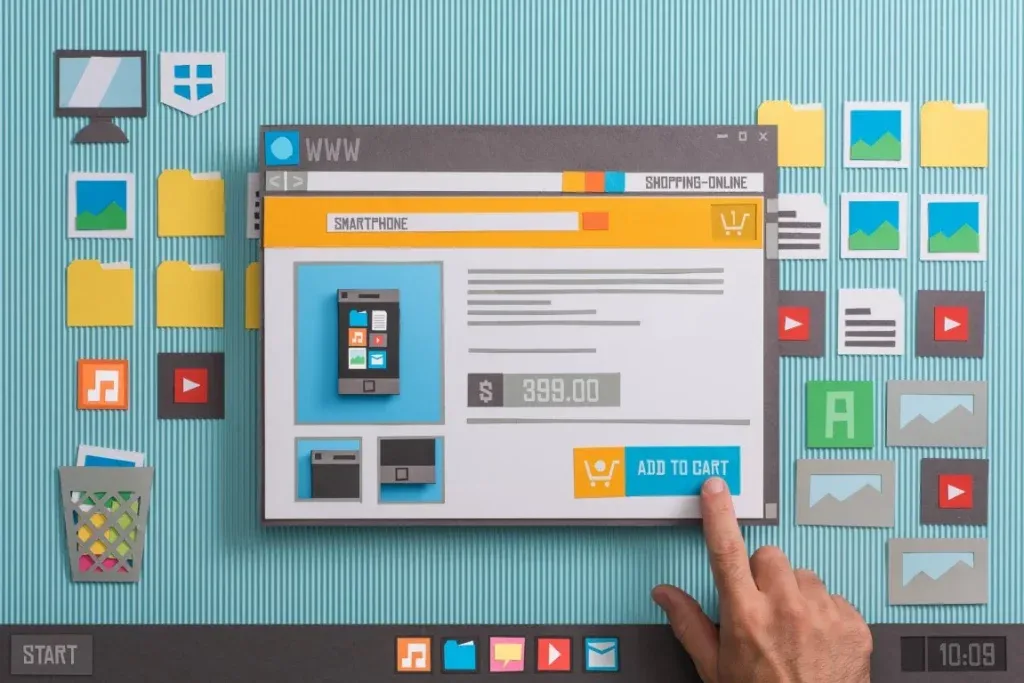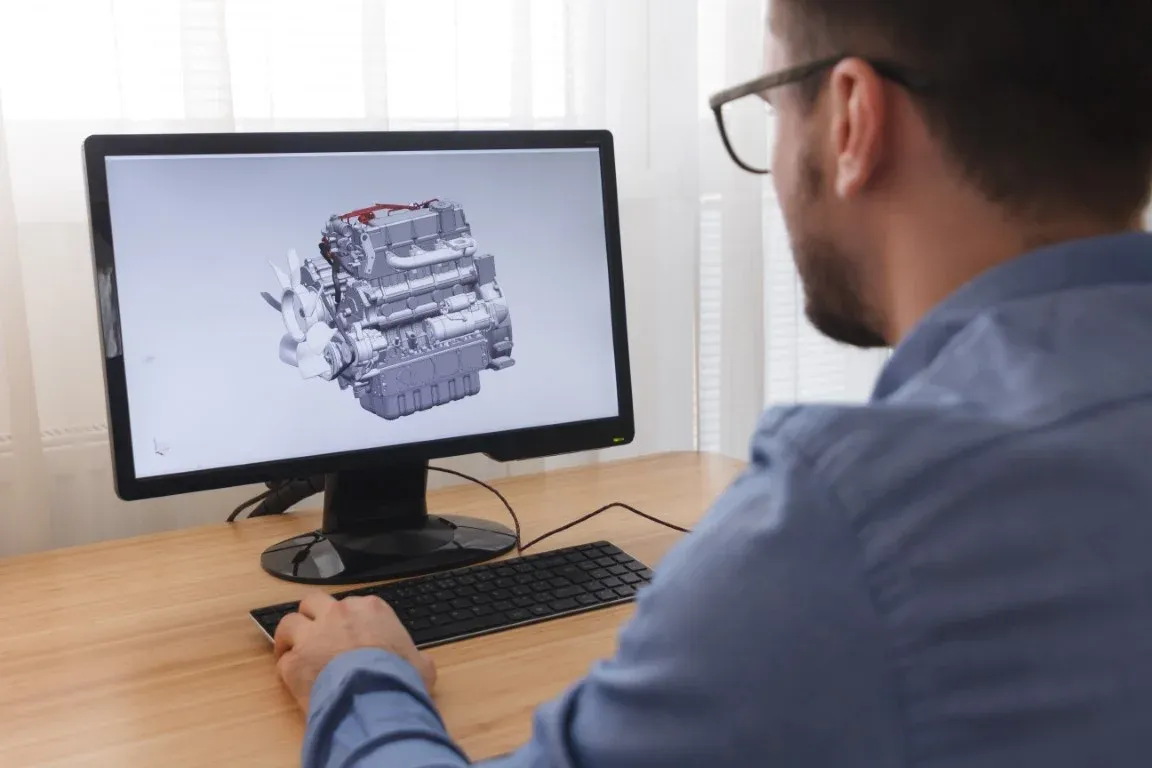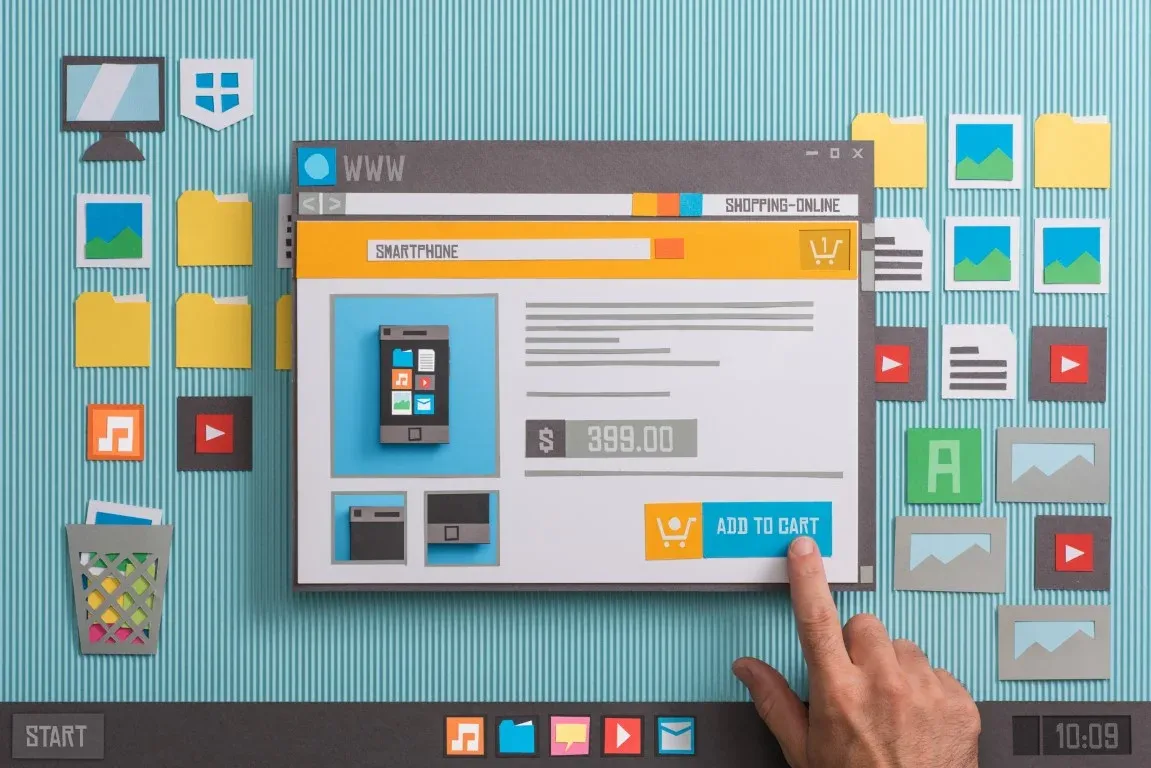Do you want to improve your customer experience to get more loyal customers?
If so, you will quickly find that it can be challenging. There is more competition in the metal fabrication market than ever before, and especially for industries like sheet metal processing, the customer is demanding more from you as a manufacturer than ever before.
So, what do you do?
Some businesses have found great success by using a self-service portal, often called a web portal or customer portal.
There are a few things you should know before you buy and implement your own portal to ensure it will actually be used by your customers and employees. First of which, is to answer the important question of whether you need one in the first place.
Yes, you read that right: these days, there are many solutions to connect your shop to your supply chain, and you don't always need a portal for that.
In this article, we'll look at the different types of customer portals, if they're necessary, and close with tips and tricks for success.
What you'll learn in this article
- Introduction: What is a Self-service Portal (SSP) for a Metalworking Shop?
- Different Types of SSPs in Metal Fabrication
- 1. Online Quoting based on CAD-files
- 2. Configure, Price, Quote (CPQ)
- 3. Web shop, Order Status, and Shipping Portal
- 4. Employee portal or Intranet
- Why Start a Self-Service Portal?
- Not everyone needs a portal. Here’s why:
- Creating and keeping demand isn't easy.
- Don’t Ignore Online Platforms!
- Tips and Tricks For Success
- Questions to ask in your team meeting to form a business case:
- Tips for Launching Your Own Self-Service Portal
- Tips for Online Quoting and Online Estimating
- Tips for Online Quoting and Online Estimating
- Tips for Cost-Price-Quote (CQP) systems / Product Configurators
- Tips for launching a webshop / e-Commerce solution
- Conclusion: Great to improve customer loyalty; however, it does come at a price.
- Start with a strategic plan
Introduction: What is a Self-service Portal (SSP) for a Metalworking Shop?

First, let's start off with some vocabulary: When we talk about customer portals, client portals, web portals, and online shops for metal fabrication, we're referring to self-service portals (SSPs).
It is often a website or mobile application that provides online access to an organization's information. It can be used by customers who want to design, order, and pay for products online.
SSPs usually also provide access to important company information such as order history, ongoing orders, customer account information, shipping addresses, previous invoices, quotes, credits, and credit limits.
For customers, a SSP answers questions such as:
- How much will this product cost me?
- What articles have I ordered in the past?
- Was my order received correctly?
- When is the planned delivery date of the order?
- Where can I find my order's delivery note or documentation?
- What other bills do I have to pay?
The data in the portal is based on information from your business systems, for example the ERP or CAM-software and other related apps.
With this, the goal is to streamline customer interactions and provide them with an intuitive way to interact with your business, without needing constant support from representatives.
Different Types of SSPs in Metal Fabrication

The manufacturing industry is a varied one with all kinds of business models. For example, sheet metal processors are focused on delivering custom parts quickly, while machine makers are often focused on delivering complete machines at competitive rates.
For each business, an online solution might work differently. Let's look at 4 different use cases for a self-service portal:

1. Online Quoting based on CAD-files
Online quoting software allows customers to get quotes based on uploaded CAD-files and requirements.
The way this works is that a customer can upload their 2D and 3D-CAD models, combined with the technical product requirements, where a CAM software system analyses the requirements and estimates the price of the product. The price is based on the configuration of the portal.
When the customer agrees with the presented price and options, they can place an order online. This results in a new sales orders which is then sent to the factory.
Within online quoting there are a couple of applications such as sheet metal estimation, but there are also solutions for CNC-milling/turning or 3D-printing. Lately, multi-application solutions have become more popular, allowing entire assemblies with a variety of products and operations to be uploaded and estimated in the portal.
Examples of this are PaperlessParts, QuotationFactory, and OX Quote.

2. Configure, Price, Quote (CPQ)
CPQ stands for Configure, Price, Quote, and it is software used by manufacturing companies to produce quotes and process orders for configurable products. In the basic philosophy of CPQ, the portal does not allow customers to upload CAD files, but instead is pre-configured with possible product options.
CPQ’s are typically built on an existing CRM software product or designed to integrate with one (or more) CRM tools. It's best used for companies that have their own products in a variety of combinations, and is less common for job shops.
For example, imagine your business makes mobile cranes. You have a couple of base models and various versions of them. Now, if one factory gets a call from a company looking to order 10 mobile cranes for their fleet, with CPQ software at hand, you can discuss with the customer the various options that are available, some of which they may not have been aware of, and provide a path for upselling.
Since the software knows all the rules for configuring your cranes, there’s no guesswork. As options are selected, the price is updated in real time and an interactive 3D model of the product continuously updates, showing the customer how their selections will look to ensure it meets their requirements.
Often, the customer can do all of this online by themselves, too. In this case, they log on to your website, and they can configure their ideal product themselves. Great use case this is exemplified by Tesla's Model 3 configuration. An example of CPQ software is Elfsquad's software systems.

3. Web shop, Order Status, and Shipping Portal
Generally speaking, not all portals need a custom quoting solution. Sometimes the products are predefined and configuration is not needed either.
This is where e-commerce websites like Shopify and Etsy and popular website builders like WordPress step in. We refer to these as custom-built e-commerce websites.
If your business has many repeating products, you might want to look into a generic webshop, where it's more about the progress of running orders and finding necessary documentation.
More advanced e-commerce websites provide customers with access to important company information, such as order history, ongoing orders, account information, shipping addresses, previous invoices, quotations, credits, and credit limits.
But it mostly does not include configurators or allow the user to upload custom CAD-based quoting.
Of course, there are exceptions to this, and often there are possibilities to combine multiple systems or custom build these kinds of solutions.

4. Employee portal or Intranet
The last version is not related to sales, but meant for internal collaboration.
An employee portal is a web-based application that provides employees with the information they need to do their jobs, such as benefits, work schedules, and company policies. It also enables them to perform tasks such as submitting time sheets and requesting time off.
Employee portals are most commonly used in middle and larger companies with over 30 employees. They can be accessed through a computer or mobile device at any time, which makes them convenient for employees who are on the go or working remotely.
An employee portal can be helpful in reducing the amount of paper work that is usually required for HR tasks. For example, the portal may include the ability to request leave online instead of having to fill out a paper form and submit it via fax or email.
We won't go into depth on this type of portal for now. But in case you're having lots of work on managing your staff and HR related issues, consider an employee portal.
Why Start a Self-Service Portal?

An in-depth study by Forrester Research and Oracle analysed business costs when handling support in multiple customer service channels. The results found that web self-service can reduce costs by as much as $11 per call!
It has shown that two thirds of business customers choose self-service over the complexity of explaining their problems by telephone to a representative or receptionist.
If customers have to pick up the phone, send an email, or even send a fax to do business with you, then you might have friction in your customer experience.
Customers today enjoy self-service digital options across all areas of life. You don't want to be the one supplier who interrupts their busy day with a difficult, time-consuming process. The customer is king, right?
So, over 60% of all communication is, theoretically, superfluous. In addition, it has been demonstrated that 28% of office staff's time is spent on reactive actions concerning email and telephone.
This same study also describes that 75% of all customers value self-service more than live service in any form. Forrester Research found that corporate purchasers now consider whether the supplier would make their online experience pleasant and easy when choosing what to do business with.
Providing your customers with 24/7/365 service in the form of self-service frees up your staff time, reduces operational costs, and boosts customer satisfaction.
How often does it not happen that one of your employees is disturbed during their work, but often cannot help the customer, causing frustration on both sides, while the problem could easily have been automated in the first place?
However, it comes at a cost and there are some important facts to consider.
Not everyone needs a portal. Here’s why:

The benefits of this are clear: it makes sense from a customer perspective. However, it should be noted that the same outcome can be achieved through other means, too.
A new SSP needs to come at the right time and for the right use case.
For example, if your company is connected to your customers through supply chain integration networks, where data is exchanged over a digital format such as UBL, SCSN, or other standardized means it’s often not necessary to spend lots of time and investment for a portal.
The goal is that data can be digitally exchanged without the need of extra representatives. If you only work with a handful of customers, it makes more sense to focus on making the collaboration with your customers more personalized and automate the transactions between the two companies.
Also, if your customer's work methods are regulated for regulatory reasons, it won't work to force the use of a portal on your customer.
Here's the thing: if your online solutions only provide marginally improved functions compared to your current means of communication, the customer won't feel inclined to use it, and thus your project won't make an impact.

Creating and keeping demand isn't easy.
If you're expecting that once you launch your online web shop or online quoting solution that hundreds of sales orders will come in the next day, you might be disappointed.
Why would a business place orders with your portal instead of somewhere else?
Once you have invested in the software and everything is working, you'll need to spend a significant amount of time and money promoting and supporting your SSP solution. Having it set-up is one thing, but making sure that customers are actually going to start and keep using it is a different question.
You might be able to find some customers with your portal, but if your prices are higher than the competition and the service isn't much better, it will quickly become hard to stay profitable.

Don’t Ignore Online Platforms!
Have you ever tried to compete with large online players in the industry?
If so, you'll know that it's difficult because they have invested millions into R&D and promotion. Getting a well working online portal is a major challenge for a lot of sheet metal working businesses.
If your goal is to laser cut work without any deviations, it might be very challenging to compete with larger established players or low-wage countries.
Especially if it comes down to simpler orders with longer delivery times, you need to be aware that there are large hubs online with big budgets, and you'll compete directly with them. Their business model is to find parts as cheaply as possible and then sell them to your customer too.
Examples of industry platform /hub websites:
So instead of competing with platforms, you can also consider a strategy where you're increasing the added value of your services. Provide more extra possibilities, better integration with existing customers, or go for just-in-time production and compete with the shortest delivery times.
Tips and Tricks For Success

To get started, you’ll need a clear business case. There is no way around it. A business case must be based on what your customer wants, and on how your current processes work.
The easiest way to do this is to focus on your top 10 or 25 favourite customers and look at how you can increase their customer experience.
Questions to ask in your team meeting to form a business case:
- What are the processes that cost us the most time?
- What can we do to streamline our collaboration?
- What can we build to make ordering easier?
- Can my customer get help in ordering?
- What are the benefits of ordering more with us?
- What will be the benefits for the customer to invest time in our process?
Tips for Launching Your Own Self-Service Portal

Software can be expensive, but it all depends on how it integrates with your existing factory.
So, what do you do? Many people have found success by using an existing software solution and integrating it to their ERP and CAM-software.
But there are a few things you should know before you buy and implement a self-service portal software to ensure it provides your customers with the right experience and keeps the project within budget.
If you're looking for a web portal software for metalworking, the best method to ensure you end up with something that lets you increase your revenue by online sales is by looking for these things:

Tips for Online Quoting and Online Estimating
- Make sure your online quoting software can integrate with ERP and CAM. If it doesn't, you'll have trouble keeping up with your work preparation. As a result, delivery times may be too long, or the cost may be too high.
- Ensure your online quoting portal has support for both 2D and 3D, so you can easily process it later down the line.
- Any good quoting system should let you configure your own pricing rules. This is important because pricing will change a lot, and you want to avoid depending on your vendor for this.
- While not necessary, some great bonus features of a great online quoting are the ability to estimate many working steps and of course, ideally you want something that runs in the cloud, so you don't have to worry about maintenance.
Tips for Online Quoting and Online Estimating

Tips for Cost-Price-Quote (CQP) systems / Product Configurators
Note: we're refering to solutions where designs are pre-defined.
- CPQ software must be based on CRM or ERP data, or at least be easily imported; otherwise you’ll still lose a lot of time with data entry.
- A good CPQ has a built-in 3D viewer to immediately see the result of the configuration.

Tips for launching a webshop / e-Commerce solution
- A web shop with standard products can be easily overengineered. It's better to start off with existing tools like Shopify, Wordpress Plugin's (WooCommerce), etc.
- Consider shipping and fulfilment: you need to make sure that the customer can follow up on orders.
- Ideally, the web shop would submit orders directly in the ERP, so all you would have to do is produce them.
Conclusion: Great to improve customer loyalty; however, it does come at a price.

If you're a business owner of a metalworking company that works with sheet metal and are looking for a way to increase your sales, cut costs in your sales process, and reach a broader audience than it can make a great investment to invest in your online services.
However, don’t ignore the costs and the demand for it!
If your customer and you truly want a web portal to place orders online, great! But if they don't need such a solution, first consider supply chain integrations with XML, JSON, CSV, or other file types.
Having an SSP is good for getting extra revenue and reaching new markets, but it can cost a lot of money to get it right. Many entrepreneurs forget that they also have to get the demand for their platform. The competition is fierce, both in product pricing and in online marketing.
It is a great service for an established customer base. You should be able to select a solution that covers the operations you want to sell online, and consider quoting and customer service. It must be distinctive based on customer experience, service, and especially the underlying technology.
Start with a strategic plan
Your systems need to be integrated. Make sure you're getting the outcomes you're looking for. Get my free guide below, or schedule a call to learn how integrating your systems will improve the quality and speed of your work.






